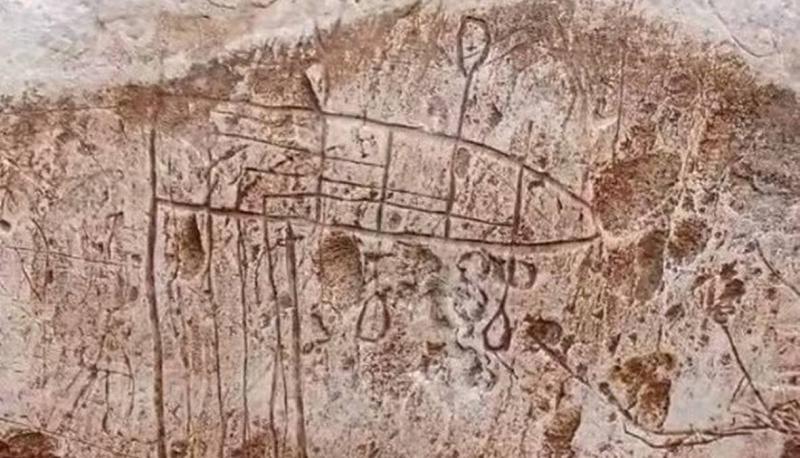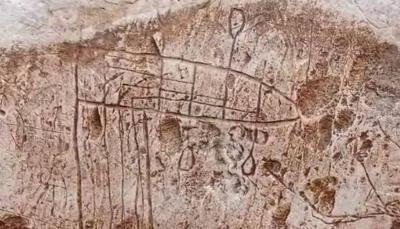The British newspaper "Daily Mail" published a report about the discovery of an "interesting" drawing left by Christian pilgrims 1500 years ago at a port in Gaza during their travels to other sites in Palestine. The drawings, believed to be around 1500 years old, depict a two-masted ship without a sail, with a small flag fluttering at the top. Although the ship is an ancient symbol of Christianity, archaeologists believe it to be a true representation of the vessel that the pilgrims traveled on.
The Israeli Antiquities Authority discovered engravings in an ancient church in Rahat, where archaeologists have been excavating since 2019. It is believed that Christians traveling to the "Holy Land" first stopped in Gaza on their way to Jerusalem, Bethlehem, and other monasteries in the Negev Desert. Archaeologists noted that the site of the church where the drawings were found is close to the ancient Roman road leading from the port of Gaza along the Mediterranean coast to Beersheba.
The authority mentioned in a Facebook post that this is the most likely route the pilgrims took to reach the holy places in Palestine. The team involved in the excavations stated, "It makes sense that their first stop after disembarking from the ships at the port of Gaza was this very church we uncovered in our excavations south of Rahat, which is only half a day's walk from the port."
The church containing the drawings dates back to the Byzantine era, marking the beginning of the Middle Ages, leading researchers to believe that the artwork originates from that period. The excavators noted: "This is a tribute from Christian pilgrims arriving by ship at the port of Gaza who visited the church and left their marks in the form of ship drawings on its walls. The ship is indeed an ancient Christian symbol, but in this case, it seems to be a true graphic representation of the vessels that pilgrims traveled in to the Holy Land."
The "Daily Mail" quoted Professor Deborah Svekler from the Department of Maritime Civilizations at the University of Haifa, stating, "The artist was attempting to create a three-dimensional drawing, and the lines underneath may depict the path that the oars struck in the water. In the Church of the Holy Sepulchre in Jerusalem, there are ships or crosses left by Christian pilgrims as a testament to their visit."
According to the authority, the second drawing indicates that the artist was familiar with maritime life, as the front mast tilts toward the bow of the ship and does not have a sail, known as the artemon, which was used to help steer the vessel.




